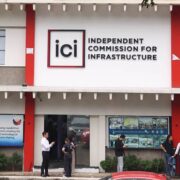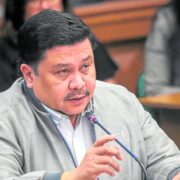Resilience through infrastructure

Positioned on the Pacific Ring of Fire, the Philippines is demonstrably one of the world’s most vulnerable nations to natural disaster risk. This reality was recently evidenced by a sequence of three major earthquakes: magnitude 6.9 (Sept. 30), 7.4 (Oct. 10), and 6.1 (Oct. 17). These tremors swiftly exposed the critical fragility of the affected communities’ public infrastructure, connectivity, and essential utilities.
As of this date, the confirmed casualty count exceeded 80, with the ensuing displacement of over 20,000 individuals. Many of those affected were compelled to seek temporary refuge in exposed areas owing to persistent seismic aftershocks. There has been substantial impairment to critical infrastructure and public utilities, which notably included the compromise of essential water reservoirs and local government administrative facilities.
Despite facing massive damage, loss of life, and the fear of relentless aftershocks, communities immediately activated their ingrained spirit of bayanihan.
Now, envision the future where this profound resilience of spirit is not a coping mechanism, but a solid foundation fortified by disaster-resilient infrastructure and services that refuse to fail. It would significantly reduce the loss of lives and economic destruction. It can be achieved through adoption of international best practices and effective enforcement.
A faster and effective way to implement such practices can be by establishing partnerships with several international organizations for disaster risk mitigation. The Coalition for Disaster Resilient Infrastructure, an international organization based in India, can significantly help the Philippines with its disaster risk mitigation efforts. CDRI endeavors to serve as the platform for its members and partners to collaborate and advocate for new infrastructure investments, thereby improving the quality of environment, livelihood, and life for over 3 billion people. CDRI provides members with data, tools, and technical assistance to upgrade their systems. This includes dedicated frameworks like the Global Infrastructure Risk Model and Resilience Index, which can provide the Philippines with a multihazard risk analysis of its infrastructure to channel investments effectively.
The Infrastructure for Resilient Island States is the CDRI’s flagship initiative, specifically designed to support small island developing states, in achieving sustainable and inclusive infrastructure. Although the Philippines is classified as a large developing country rather than a traditional SIDS, it shares many SIDS vulnerabilities due to its archipelagic nature on the Pacific Ring of Fire. It experiences high exposure to cyclones and seismic activities. It also has high dependence on coastal and interconnected island-based infrastructure.
The other program is the Urban Infrastructure Resilience Programme with the goal to enhance the resilience of city-level infrastructure, particularly in low- and middle-income countries and SIDS. The Philippines is rapidly urbanizing, and its major centers particularly Metro Manila, Cebu, and Davao, are highly vulnerable to seismic activity and flooding. The UIRP offers a direct path for these cities to obtain funding and data-driven solutions to develop and implement resilient street infrastructure, improving drainage, and strengthening social infrastructure like schools and hospitals against urban hazards.
However, currently, the Philippines is not explicitly listed as one of the CDRI’s member countries. The Philippines has a standing invitation to join the CDRI, which was renewed in November 2020. In fact, an opinion piece (see “Twin Indian initiatives for PH membership,” 1/2/21) in the Inquirer by the former Indian ambassador to the Philippines noted an optimistic hope for the Philippines to join CDRI, but formal membership has not yet been announced.
The often-cited reason for nonformalization of the memberships for many Association of Southeast Asian Nations countries, including the Philippines, is slow internal procedures and bureaucratic bottlenecks. I would argue that the Philippines should prioritize joining CDRI primarily to secure critical funding, acquire specialized technical knowledge, and minimize cascading economic losses from future disasters.
Resilience is a critical economic investment. The massive annual economic losses and immediate post-quake infrastructure failures demonstrate that proactive spending on resilient infrastructure is more cost-effective than repeated post-disaster reconstruction. CDRI highlights that for every $1 invested in resilient infrastructure, over $4 in losses can be saved when a disaster strikes. Given that the Philippines incurred over $12 billion in damages and losses from tropical cyclones alone between 2011 and 2021, securing preemptive resilience funding is a powerful economic measure.
—————–
Gauri Singh is an advocate/lawyer practicing in India.

















Christianity, culture, and corruption in PH